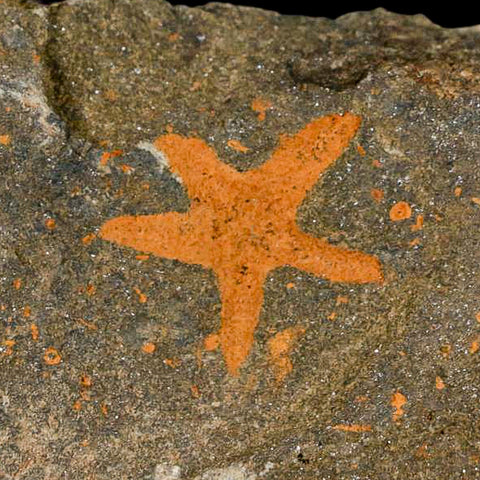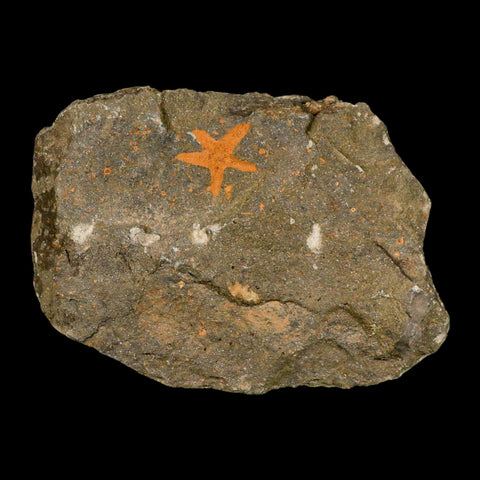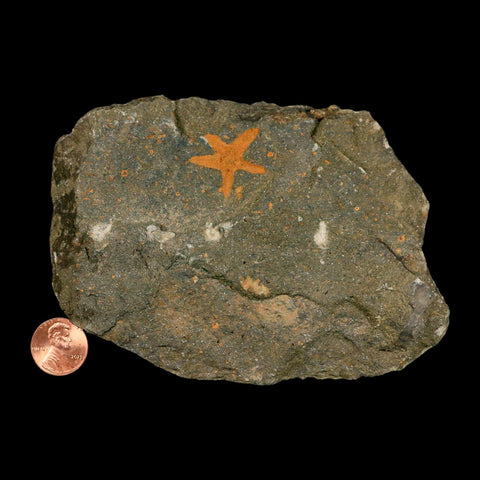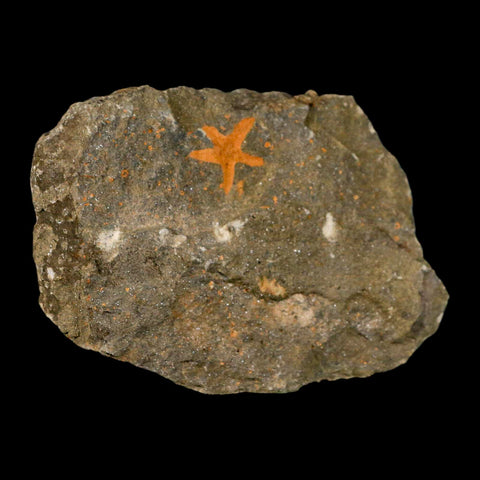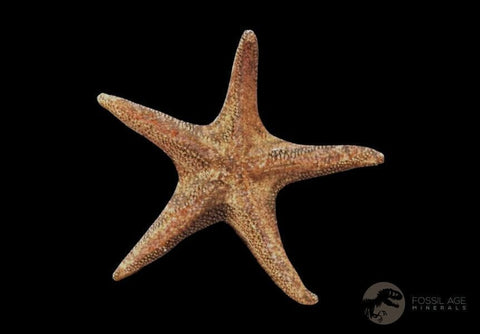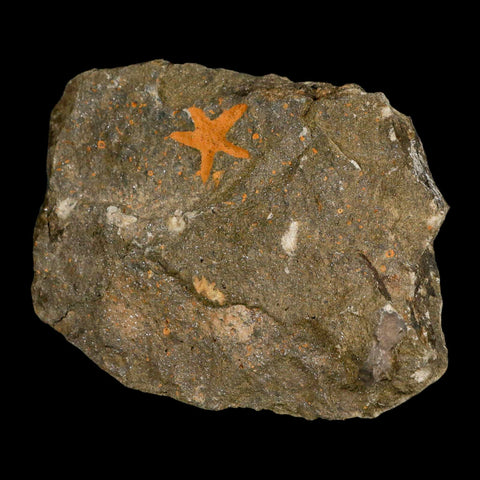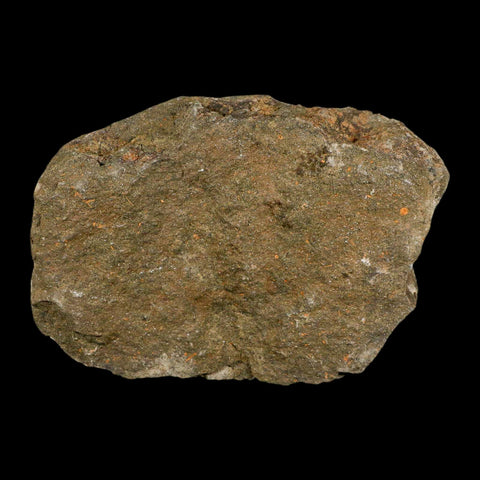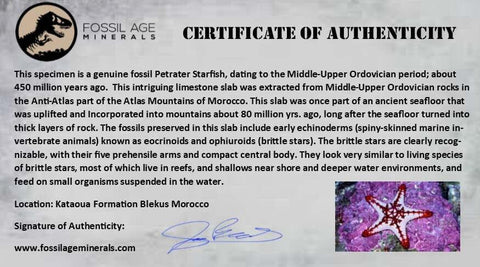24MM Brittle Star Petraster Starfish Fossil Ordovician Age Blekus Morocco COA
Location: Kataoua Formation, Blekus, Morocco
Weight: 13.9 Ounces
Starfish Dimensions: 24MM
Dimension: 5 Inches Long, 3.5 Inches Wide, 0.9 Inches Thick (Plate)
Comes with a Certificate of Authenticity.
The item pictured is the one you will receive.
Brittlestar Petraster
This remarkable limestone slab was sourced from Middle to Upper Ordovician strata, approximately 450 million years old, within the Anti-Atlas region of Morocco’s Atlas Mountains. Originally part of an ancient seabed, it was later elevated and integrated into mountainous terrain about 80 million years ago, well after sedimentation transformed the seafloor into solid rock layers. The slab harbors exquisitely preserved fossils of early echinoderms—spiny-skinned marine invertebrates—including echinoids and brittle stars (ophiuroids). The brittle stars, distinguished by their five agile arms and compact central disc, closely resemble modern species that inhabit reef ecosystems and both shallow and deeper marine waters, where they feed on planktonic organisms.
Eocrinoids break the mold with their strikingly slender, tapering stems crowned by clusters of arm-like appendages. These creatures, likely the Eocrinoid Ascocystites, boldly thrived as suspension feeders, siphoning nourishment straight from the water column and filtering microorganisms using their intricate appendages.
Despite the name, eocrinoids were unrelated to crinoids (sea Lilies) and differ in several morphological features from ancient and modern crinoids. However, like many fossil crinoids, their elongated stem allowed for attachment to hard substrates and the possibility of raising themselves higher off the seafloor.
There appear to be several larger individuals along with several much smaller ones. Those smaller animals may be juveniles of the larger form or a different species. Do you notice how the smaller individuals often seem to be in close contact with the brittle stars? We are often led to wonder whether the brittle stars were feeding on the smaller echinoids.

Please be aware of the nature of fossils:
Being buried under the ground for millions of years under tons of pressure tends to be rough. No fossil comes out of the ground whole and perfect. Most fossils have undergone some restoration, while others are altered by man simply to enhance their presentation in different ways. The workers in Morocco do a very professional job of unearthing and preserving these natural treasures. These are part of the natural beauty of the fossil and are not considered defects.


